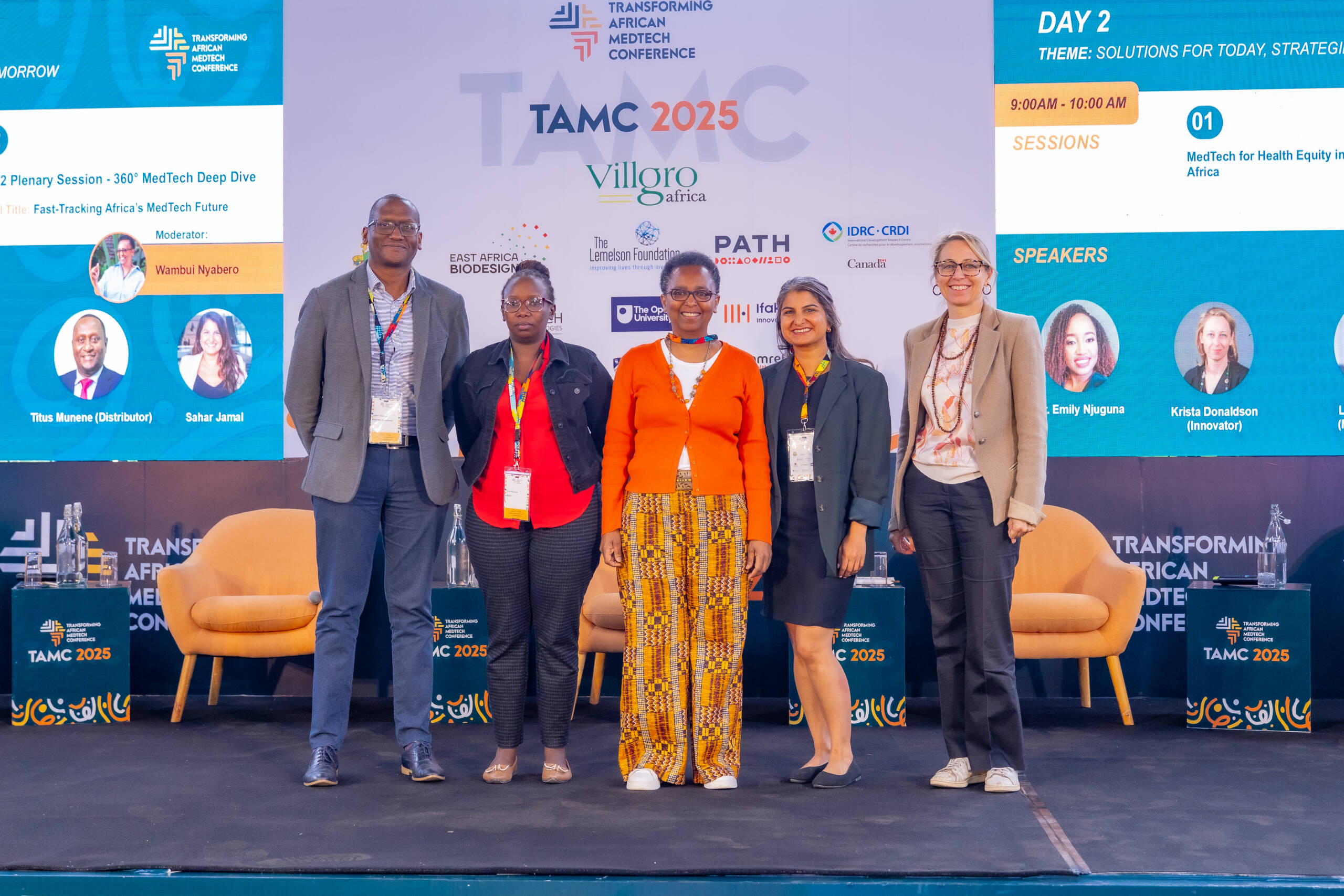The Transforming African MedTech Conference (TAMC) Day 2 Morning Session opened with an incredibly engaging discussion on “Solutions for Today, Strategies for Tomorrow.” Moderated by the insightful Wambui Nyabero, the panel brought together thought leaders: Krista Donaldson, Latiff Cherono, Sahar Jamal, and Phoebe Kamar, who painted a vivid picture of what the future of African MedTech could look like, and the practical steps needed to get there.
A recurring theme was the vision of Africa not just as a consumer of medical technologies, but as a global hub for manufacturing and innovation. The future, as the panel described, is one where multinational investments flow into Africa, local manufacturing thrives, and governments play an active role in enabling infrastructure like electronics design and test labs. In this vision, African countries are not only producing devices for local use but also exporting high-quality products to the world, supported by distribution systems that guarantee access and reliability across the continent.
But how do we get there? The panelists emphasized that scaling innovation into real economic and social impact requires more than breakthrough ideas. It calls for strengthened public-private partnerships, deliberate government funding, and the development of robust local manufacturing ecosystems. It also requires solutions that are customer-centered and designed with adoption in mind, as well as regulatory systems that are both supportive and efficient. Importantly, startups must be given room to grow through access to capital, mentorship, and pathways to integrate into larger health systems. Protecting Intellectual Property, particularly with an eye toward its technical defendability, was also highlighted as a cornerstone for safeguarding African innovations.
Of course, the journey is not without barriers. The panel acknowledged persistent challenges such as resource limitations, regulatory bottlenecks, and weak support environments for startups. Yet, there was also optimism: these challenges are surmountable if stakeholders commit to building ecosystems that are supportive, rules that are clear and enforceable, and innovation that is nurtured rather than stifled.
What stood out most was the call for collaboration. The future of African MedTech cannot be realized in silos. Governments, private sector players, innovators, and international partners must work hand in hand — whether in funding critical infrastructure, fostering supportive environments for startups, or pursuing an integrated approach to manufacturing across the continent. By aligning efforts, Africa can truly position itself as a hub of innovation and production, shaping the future of healthcare both regionally and globally.
The conversation left no doubt: the future of African MedTech is bright. But it will only become a reality if today’s solutions are matched with tomorrow’s strategies — bold, collaborative, and action-driven.
#AfricanMedTech #Innovation #Healthcare #Manufacturing #PublicPrivatePartnerships #EcosystemDevelopment #TAMC #FutureOfHealthcare





